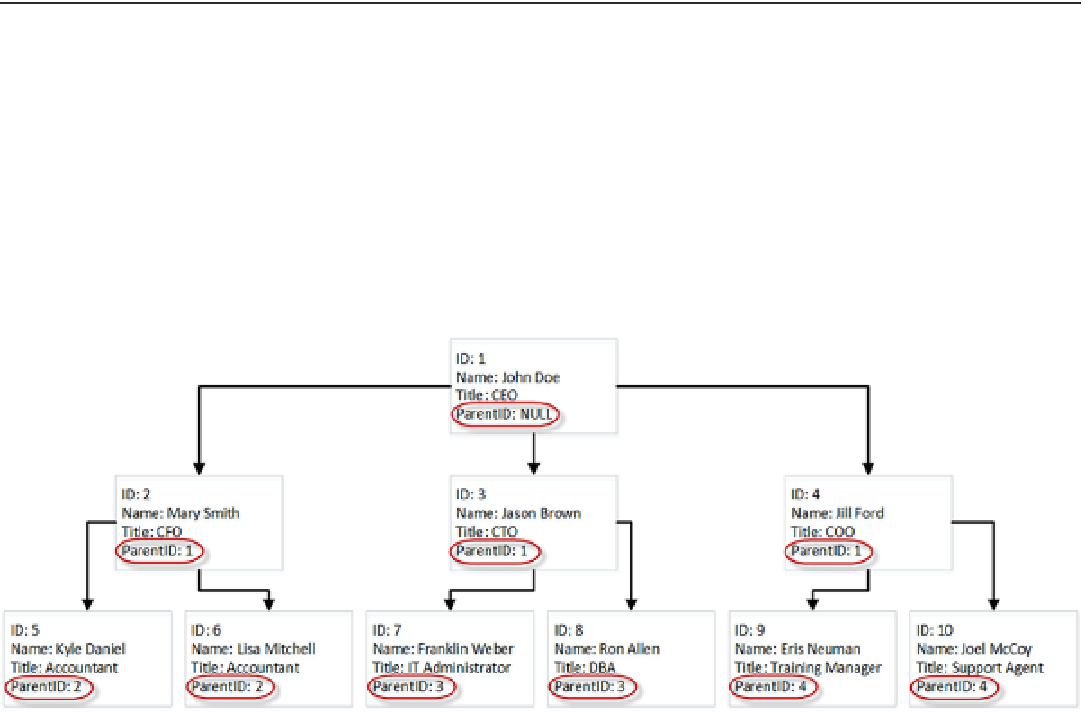Database Reference
In-Depth Information
■
Coverage of
HierarchyId
data type methods is beyond the scope of this topic. You can learn more about the
Note
There are several techniques that allow us to store hierarchical information in a database. Let's look at the most
common ones:
Adjacency List.
This is perhaps the most commonly used technique. It persists the
reference to the parent node in every child node. Such a structure is shown in Figure
14-11
and Listing 14-14.
Figure 14-11.
Adjacency List
Listing 14-14.
Adjancency List DDL
create table dbo.OrgChart
(
ID int not null,
Name nvarchar(64) not null,
Title nvarchar(64) not null,
ParentID int null,
constraint PK_OrgChart
primary key clustered(ID),
constraint FK_OrgChart_OrgChart
foreign key(ParentId)
references dbo.OrgChart(ID)
)
Closure Table.
This is similar to an Adjacency List, however the parent-child relationship is
stored separately. Figure
14-12
and Listing 14-15 show an example of a Closure Table.

